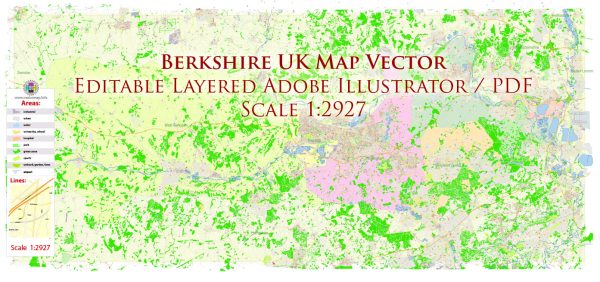The history of urban development in Berkshire, a county in the southeastern part of England, is a fascinating journey that reflects the changing social, economic, and political landscapes of the region over the centuries. While Berkshire is known for its beautiful countryside and historic towns, it has also seen significant urban development in certain areas. Here is an overview of the history of urban development in Berkshire:
- Early Settlements: Berkshire has a rich history of human habitation dating back to ancient times. Prehistoric and Roman settlements have been discovered in the area, with evidence of Roman villas and roads. The presence of these early settlements laid the foundation for future urban development.
- Medieval Period: During the medieval period, the county saw the growth of several market towns, including Reading, Windsor, Newbury, and Abingdon. These towns became centers of trade, commerce, and administration, and their urban infrastructure expanded to accommodate the growing population.
- Royal Residences: Berkshire is known for its royal connections, with Windsor Castle being a prominent example. The construction and development of royal residences, such as Windsor Castle and Hampton Court Palace, had a significant impact on the county’s urban development.
- Industrial Revolution: The 18th and 19th centuries brought about significant industrialization, particularly in towns like Reading and Newbury. The development of canals and later railways contributed to the growth of industry and urbanization in these areas.
- Transport Infrastructure: The county’s urban development was further boosted by the construction of the Great Western Railway, which had its mainline running through Berkshire, connecting London to the west of England. This improved transportation links, fostered trade, and accelerated the development of towns along the railway route.
- Twentieth Century: The 20th century saw further urbanization and expansion, particularly in areas like Slough, which developed into a significant industrial and commercial center. The post-World War II era also witnessed suburban development and the growth of commuter towns as more people moved out of London into the surrounding areas, including Berkshire.
- Modern Developments: In more recent years, towns like Reading have seen significant redevelopment, with the growth of technology and business parks, and the expansion of the University of Reading contributing to the urban landscape. Additionally, the development of modern housing estates and retail centers has continued to shape the county’s urban areas.
Berkshire’s history of urban development reflects a dynamic interplay between its rural character and its role as a vibrant economic and administrative region. The county’s strategic location and historical significance have played a key role in shaping its urban landscape over the centuries. Today, Berkshire is a diverse region that encompasses both urban centers and areas of natural beauty, making it a unique and historically rich part of the United Kingdom.


 Author: Kirill Shrayber, Ph.D.
Author: Kirill Shrayber, Ph.D.